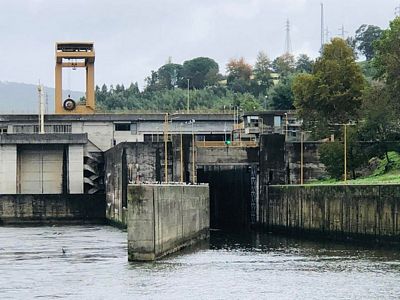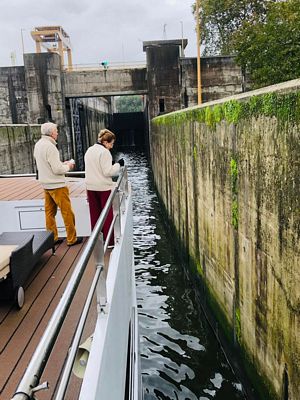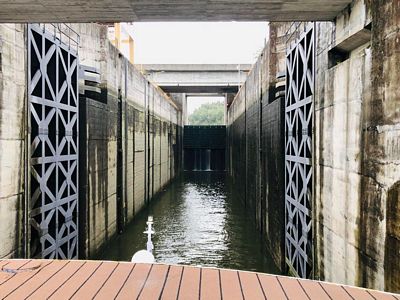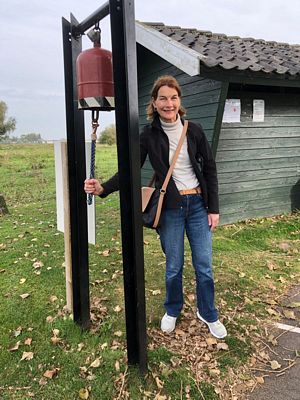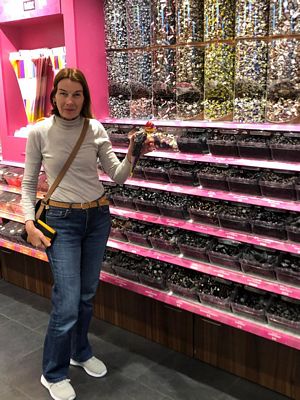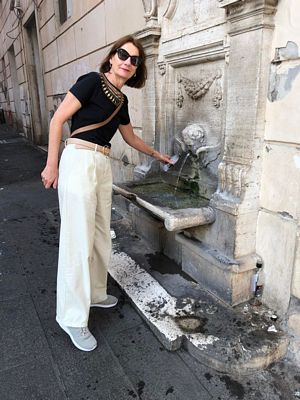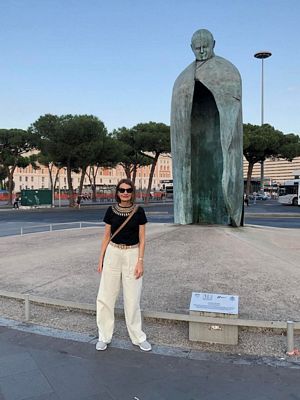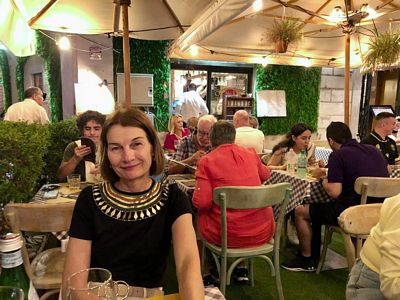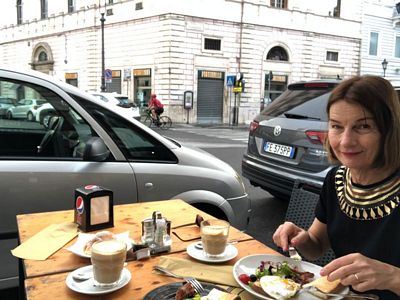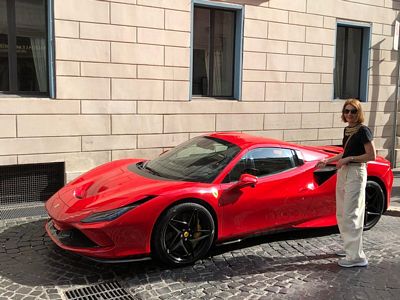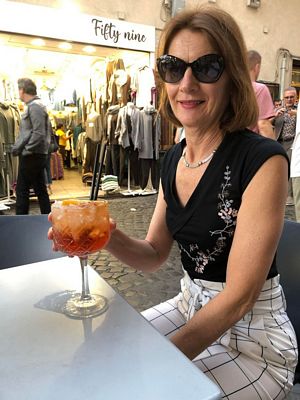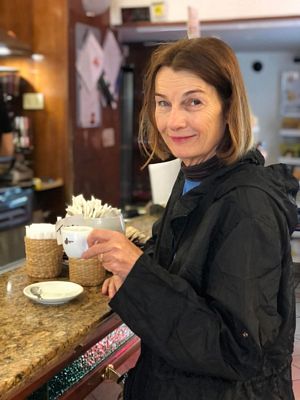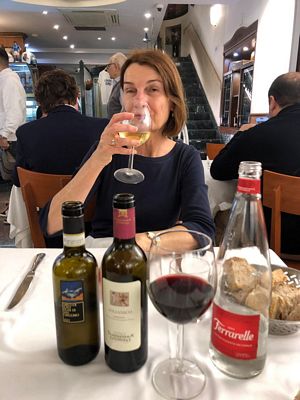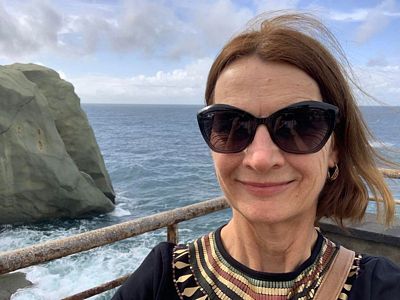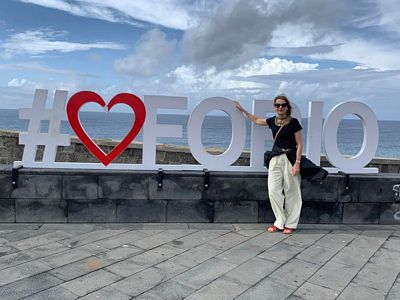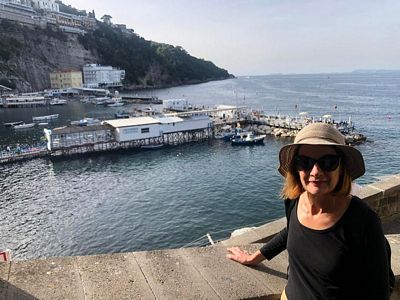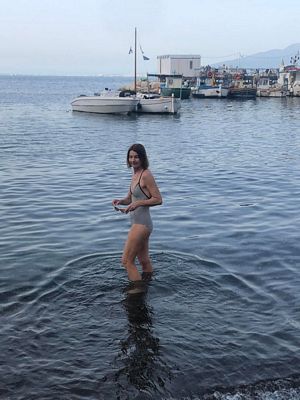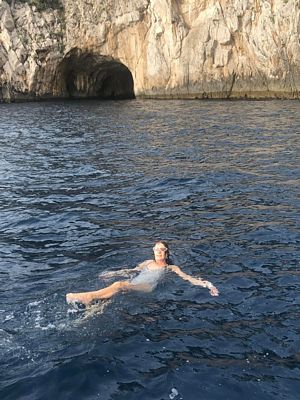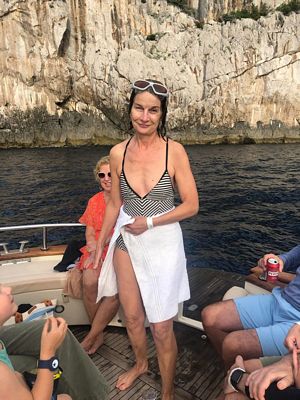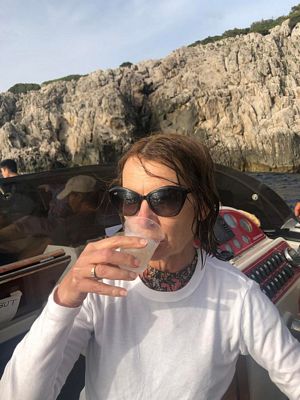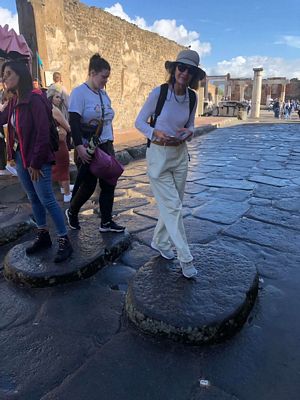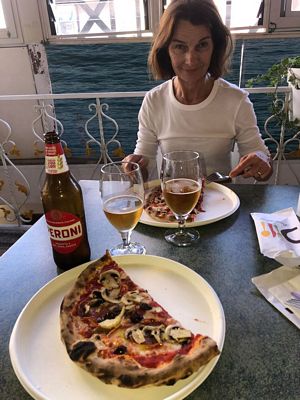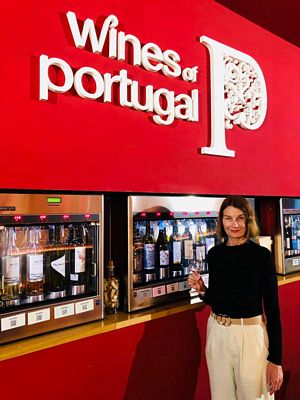Douro
Day 27 - Friday 3 November - Douro Cruise, Portugal
Yesterday afternoon we boarded the Nicko Duoro Queen for our river cruise in Gaia, across the Douro River from Porto. The boat stayed overnight in Gaia and in the morning we had a bus and walking tour back across the river of the old and new parts of Porto - much of which we had already seen it but we did get some additional information and background on Portuguese history.
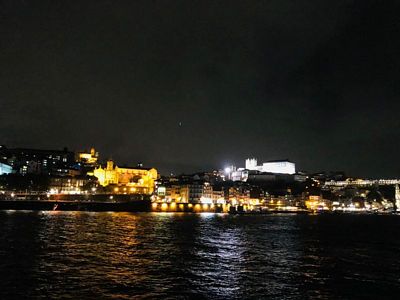
View of Porto at night from the dock across the river at Gaia
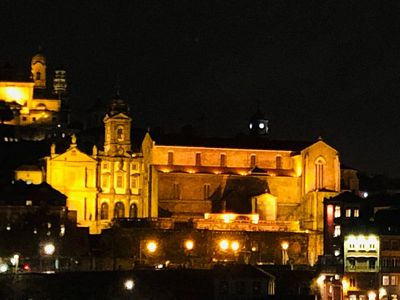
The church of Sao Francisco

Se de Porto, monumental 12th century religious site
Again we were treated to a typical Porto weather at this time of year - five minutes of rain, five minutes of sunshine, and then another five minutes of rain. The bus also took us along some fairly flat land to the mouth of the Duoro River which contains the sea port and beach front of Porto. This area between the hilly Porto and the coast was settled by wealthy families who built quite large mansions, some of which still remain. At this time of the year the seas are pretty rough, with weather coming in off the Atlantic Ocean, a bit like Ireland, and the Netherlands. This was especially true at the moment given that there were some large storms recently. The sea was really churning and there were some quite large waves pounding the coast. We stopped at the coastal fort of Sao Joao, built centuries ago, to defend Porto from the various invaders that tried to take control of the area.
Then it was back for lunch on board the boat for lunch which was a reasonable smorgasbord. Soon the the boat left its moring at Cais do Gaia and started to travel up river. The quay is in Gaia, a separate settlement on the other side of the river to Porto although both communities they shared the river and port. The shady Gaia on the southern side of the river was more suitable for storing wine than the sunnier northern side of Porto. Most new development is on the Gaia side and along the river towards the coast.
As we cruised, the scenery was quite interesting, bushland and small villages on either side of the river. A highlight was moving through the first lock at Crestuma, which raised boat approximately 15 metres. Because of the narrow river Navigation at night is not possible, so as the sun set the boat moored at small town of Entre os Rios. Because of the high river level due to recent rain, we could not pass through the second lock at Carrapatello.
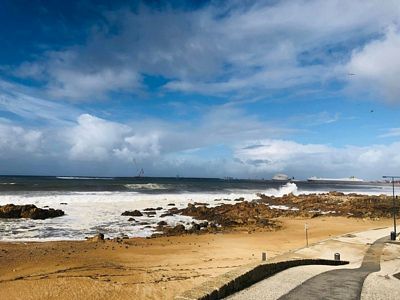
View of the coast and shipping port in the distance
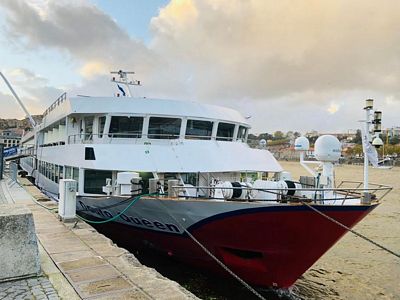
The Duoro Queen at port

View of the coast near the mouth of the Duoro River
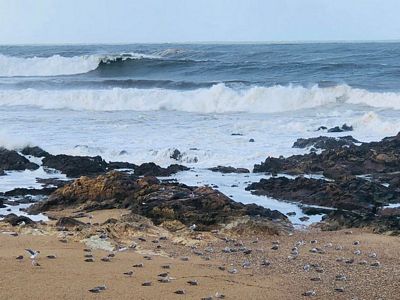
The sea and seagulls sheltering from the wind
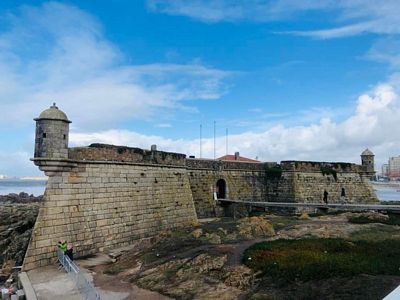
The fort Sao Francisco Xavier
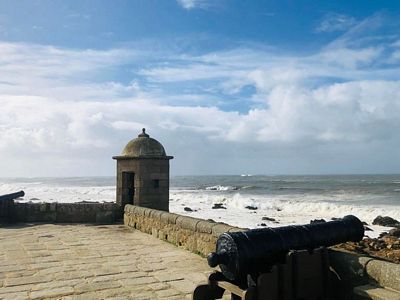
View from the port - the photo doesn't really show the size of the waves.
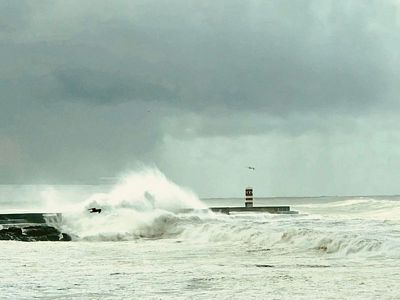
Waves hitting the lighthouse and breakwater at the mouth of the Douro
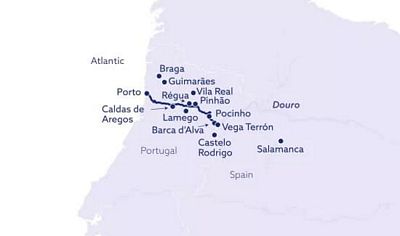
Map of the cruise
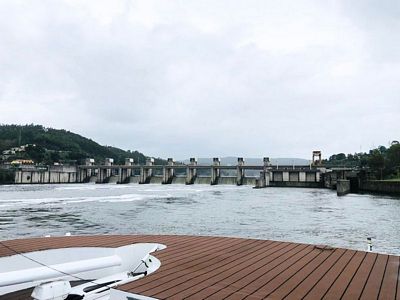
Entering the first lock.
Day 28 - Saturday 4 November - Douro Cruise, Portugal
Because of the poor weather and intermittent rain, the boat was still moored at Entre-os-Rios, so the day’s excursions took place by bus. We initially travelled about an hour and a half to Quinta Avessada, a large port winery and fortunately the rain cleared as we arrived. The family winery makes mainly a white fortified wine from muscatel grapes. This is because they are above the 500m mark which is the cut-off for the authorised port region. We learned that 90% of the production of port wine is exported, and most of the remainder is sold in Portugal to tourists. The Portuguese only drink port on special occasions, as it is mainly used as an aperitif or a desert wine.
After a fairly cheesy introduction to the winery and its history while tasting their wine, we were treated to a lunch of “traditional” regional food accompanied by their white and red table wines. The entree consisted of a codfish cake, two types of sausage and roast pork belly. This was followed by “caldo verde” a nice light soup containing pureed potatoes and thinly sliced kale. The man course was slow roasted beef with cooked vegetables and roast potatoes, something similar to what we have eaten in Portuguese restaurants in Australia, but different. The meat and vegetables were absolutely delicious, but the potatoes were a bit too oily for our taste. There were a range of choices for dessert, but the highlights were pears poached in red wine and a type of cream caramel. At the end of the meal, we were all offered a small glass of grappa (80% alcohol), which was just a bit too much for the middle of the day.
Following lunch, the excursion by bus continued in pouring rain and strong winds to the Mateus Palace in Vila Real and fortunately the skies cleared again just as we arrived. The company responsible got the famous Mateus (pronounced Matayush) rose which is almost exclusively exported as the Portuguese don’t drink it - there are many much better roses produced here. The palace was built between the 15th and 17th centuries, by numerous wealthy members of the nobility who settled in Vila Real where they produced port wine. It was designed in the baroque style by the Italian Nicolau Nasoni (who also designed churches and buildings in Porto) and contains an eclectic collection of furniture, artefacts, and books from around the world dating back hundreds of years. The mani building is located in a lovely park and estate with highly manicured hedges and ancient trees in the French style. As the tour ended, the rain again drifted in and when we returned to the bus, it indicated the outside temperature was 9 degrees!
With the sun setting, the bus headed back for another hour’s drive to the boat where we could dry out, warm up and have a light dinner.
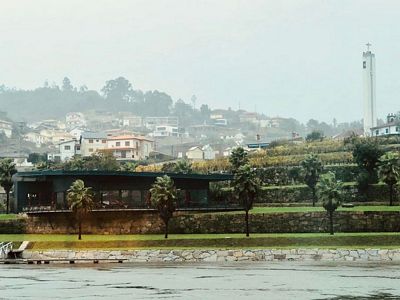
View across the river from our mooring at Entre-os-Rios
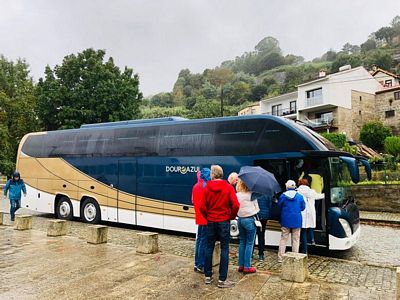
Boarding the bus in the rain
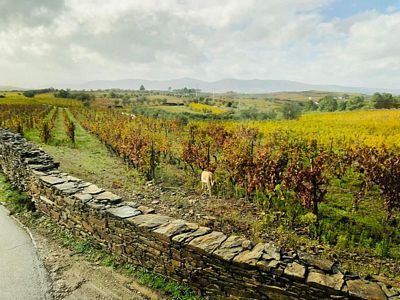
The vineyard at Quinta Avessada
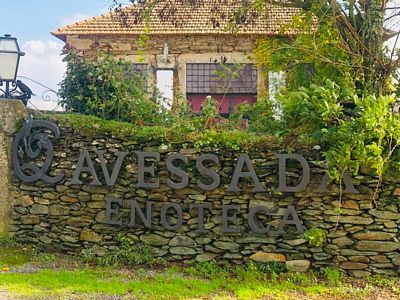
Quinta Avessada
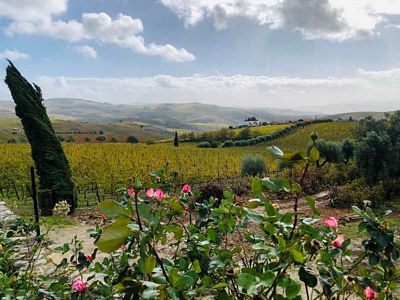
The vineyard
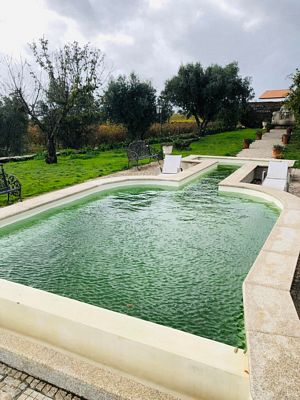
The bottle-shaped pond
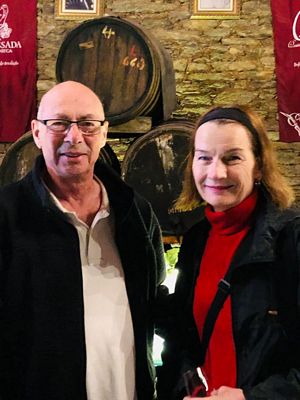
Tasting wine in the cellar

The wine tasting room with barrels of port dating back more than 50 years
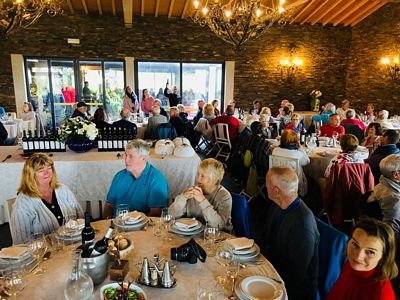
Being "entertained" by a history of the winery before lunch
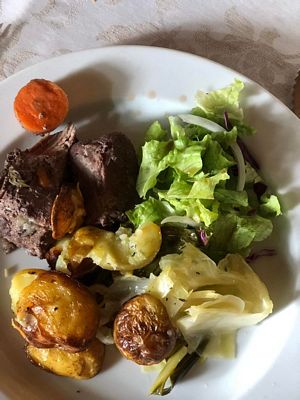
The main course for lunch at Quinta Avessada
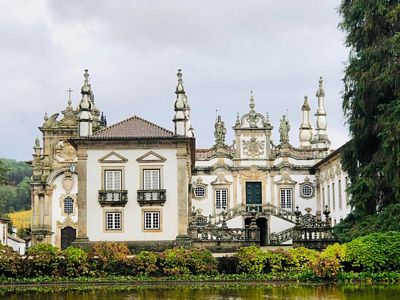
The Mateus Palace in its Baroque splendour
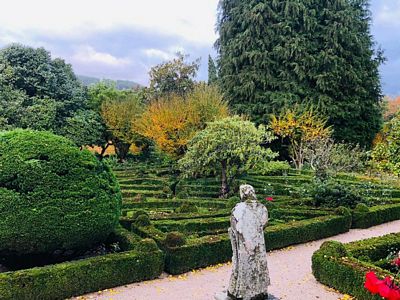
A small section of the gardens
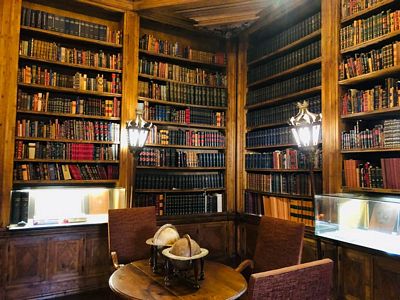
The library including printed and handwritten books
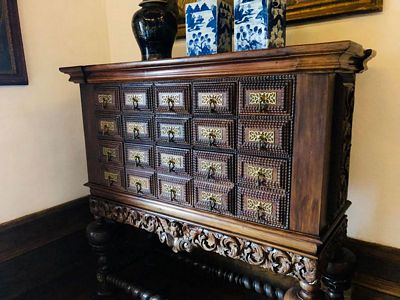
One of the ornate cabinets
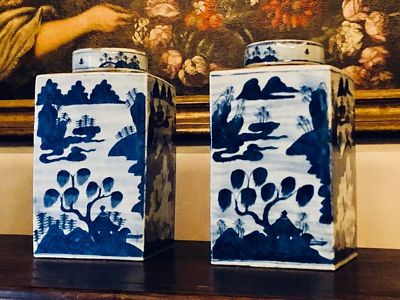
Vases from China
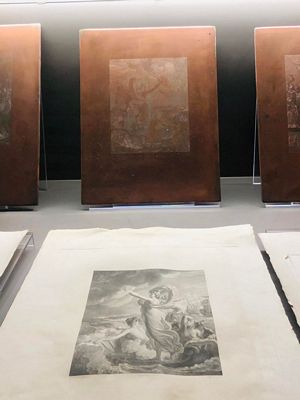
Page from an illustrated book with the original engraved copper plate
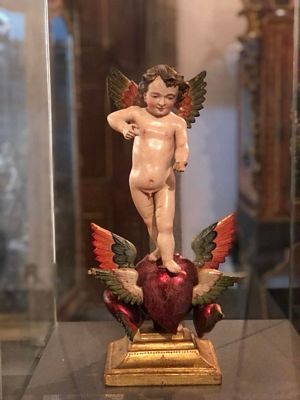
One of the eclectic pieces in the collection
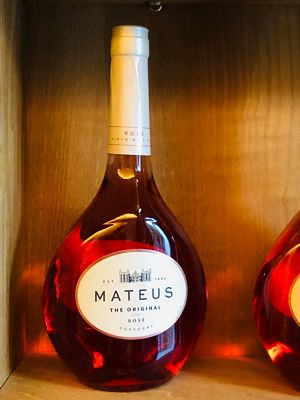
Mateus "The original rose" with the palace depicted on the label
The weather in Portugal
We probably should not complain too much about the weather - Europe is getting hammered by storms.
We have discovered that most of Portugal’s weather is determined by the Atlantic Ocean and it does not in fact have a Mediterranean climate.
The Douro valley apparently has two seasons, Winter for 9 months when it’s cold and wet, and Hell for 3 months when it’s hot and dry. These harsh conditions, plus the type of soil, produces the ideal climate for grapes, olives and almonds.
I think I prefer the climate of the NSW east coast.
Day 29 - Sunday 5 November - Douro Cruise, Portugal
This morning, because the river was too high to cruise and as compensation, we were taken by bus to the town of Amarante which is at the mouth of the Tamaga River, where it joins the Douro River. This is still in the north west region of Portugal, but they do not grow grapes for port, but instead for vinho verde or green wine. This naming comes from the fact that the area so green because it has over 2m of rain per year. Also, because of cool climate, the grapes do not develop as much sugar so they are used to make light white or red wines.
When Portugal became an independent country, the king invited many religious orders to come to Portugal to set up ministries, which were instrumental in boosting local economies through agricultural production. The monks of the male orders focused on producing grain and wine, while the nuns of the female orders specialised in developing and producing sweets, mainly using the yolks of eggs which were left over after the egg white was used for starching their clothes. A local priest became Saint Gonzalo, the patron saint of Amarante and weddings when, after a pilgrimage to Jerusalem, he came back and spent the rest of his life working with criminals and prostitutes, encouraging them to marry and integrate into town life. One of the outcomes of this tradition is that the town produces a popular phallic shaped cake, which is to promote fertility at weddings.
This connection with religion all changed when, during the republic under Salazar, many of the monasteries were acquired by the state and converted into public buildings, causing a huge exodus of the religious orders from Portugal.
We returned to the ship for lunch where we enjoyed a very nice vinho verde. Shortly afterwards Wolfgang, our cruise director, announced that we had permission to travel through the next lock at Carrapatello. Following a cheer from the passengers, the boat quickly headed upriver. Carrapatello is the highest lock on the river, and soon we ascended 35m to the next level of the river and moored again for the night.
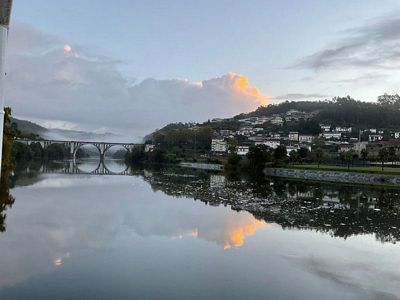
Dawn at Entre-os-Rios
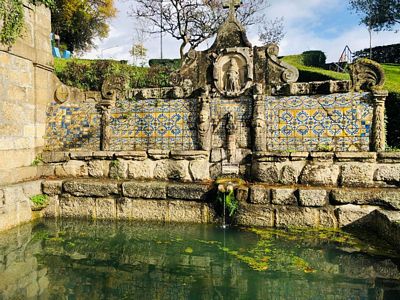
Fountain in Amarante
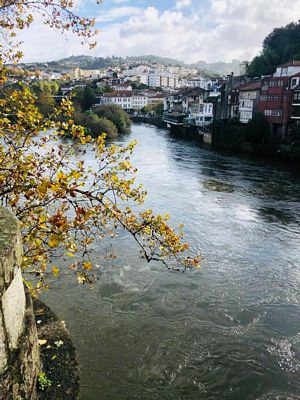
The town of Amarante
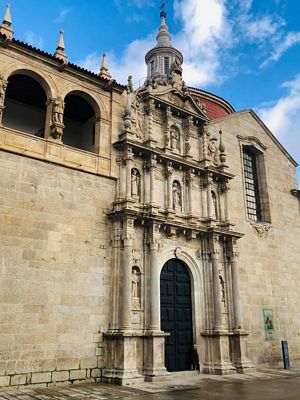
The Cathedral in Amarante dedicated to Mary, mother of Christ

Statue of Mary with Christ
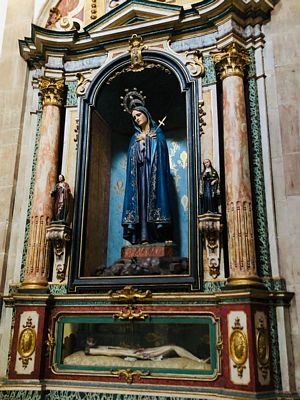
Inside the cathedral
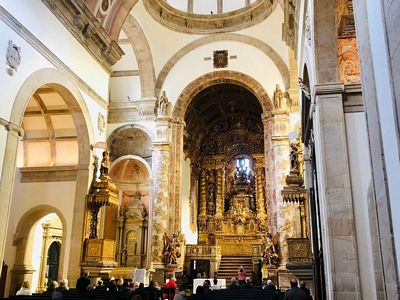
It’s pretty gothic but also amazing inside
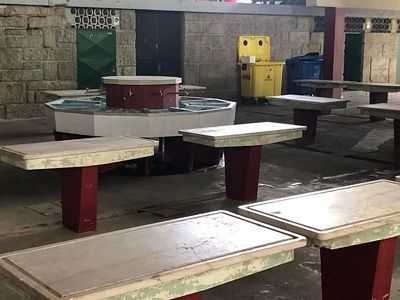
The fish section of the local market
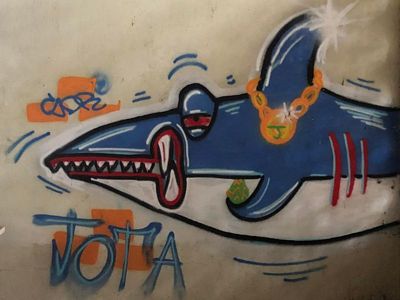
Graffiti mural in the fish section of the local market
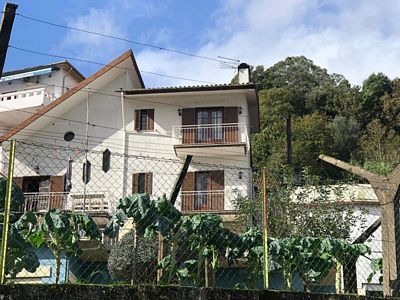
The local large-leaf cabbage used in the local “caldo verde” vegetable soup with puréed potatoes.
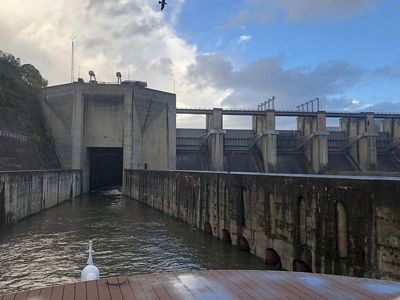
Approaching the lock of Carrapatello
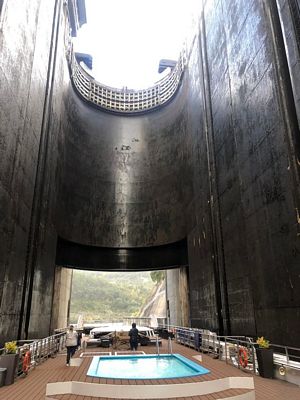
The barriers at the front and rear are lowered down, the the water flows in and the boat starts to rise. It's impossible to get a sense of the scale in a photograph.
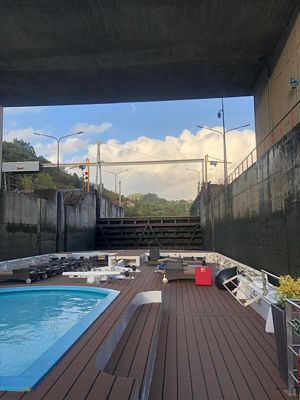
Nearing the to of the lock
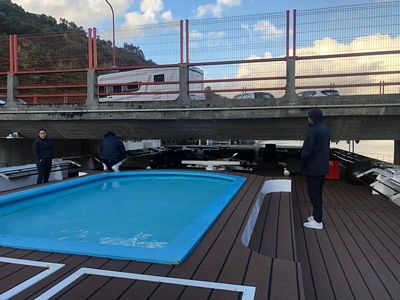
The boat only just fits underneath the roadway at the higher level

Another cruise ship (at right) heads towards the lock to descend to the lower level. The water level in the dam is about 30cm from the top!
Day 30 - Monday 6 November - Frances' Birthday
Happy Birthday Frances, still cruisin' - it was Frances’ 2nd birthday in 40 years in Portugal.
That evening, the ship’s crew presented her with a bottle of sparkling wine and a birthday cake - a nice gesture.
Day 30 - Monday 6 November - Douro Cruise, Portugal
Because of flooding on the Douro River, our itinerary has been changed, and so today we left Pinhão by bus for an excursion to the small town of your Lamego. With origins before the Roman occupation of the Iberian Peninsula, Lamego is known for its historic city center, having a long history as a principal city of the former Trás-os-Montes e Alto Douro Province.
It is one of the few remaining parts of Portugal that has a bishop, and the Roman Catholic Diocese of Lamego is based in the city center. In the 16th century, Manuel de Noronha (one of the more notable prelates of Lamego) was appointed the Bishop of Lamego, and he was responsible for the construction of the Sanctuary of Nossa Senhora dos Remédios (Our Lady of Remedies). This famous 18th century church stands atop the hill overlooking the city and is approached by 600 steps ornamented with tiles, urns, fountains, and statues. The church interior has a marvelous sky-blue and white plaster rococó style ceiling and a heavily gilded altar. It exudes extravagance and excess and shows the wealth of the church at that time.
I must say at this point that the rain and sunshine has been intermittent since the cruise started - literally 5mins of sunshine then 5 mins of sometimes drenching rain. Our little excursions take place within these extremes.
We returned to the boat at Regua by bus for lunch, and during lunch, the boat received news that we could proceed upriver and so through the third lock, Barragem de Bagauste and dock at Pinhão (pronounced Pinyow).
After docking at Pinhão we were off again for a 15 minute guided walk to the train station in the picturesque town. The town was is major distribution centre for port wine, but had declined since road and rail transport replaced the boats which took barrels of wine down the Douro River to Porto.
The main attractions of the station are the blue, white, and yellow decorative panels made with painted tiles (manufactured in Aveiro) displaying panoramic scenes of the wine harvest in its various stages which transform the station into a public museum. Another attraction are the huge cement breast-shaped vats used to store port before being drained into barrels which the locals call “Ginas” after the famous Italian actress Gina Lollobrigida.
The grapes are picked, and after being crushed, the wine is stored in these ginas during the winter, but when the weather warms up, the wine is trucked in barrels down to Gaia, across the river from Porto, where the fermentation continues in the much cooler conditions. Temperatures in the Douro valley can reach 40° in summer, much too hot for producing the wine.
The boat sailed back to Régua and that evening we had a Portuguese dinner buffet featuring some traditional Portuguese foods, which was followed by the opening of bottles of “vintage” (5 year old) port wine by heating the neck of the bottle with iron tongs, then chilling the top with iced water which snaps off the top containing the cork to avoid the old cork breaking up and tainting the wine if opened by a cork screw in the normal way. We were then invited to try a glass at the special price of €6.50 (instead of €9.00).
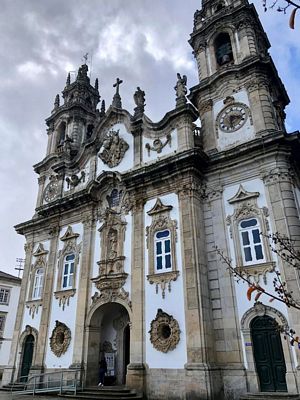
Sanctuary of Nossa Senhora dos Remédios
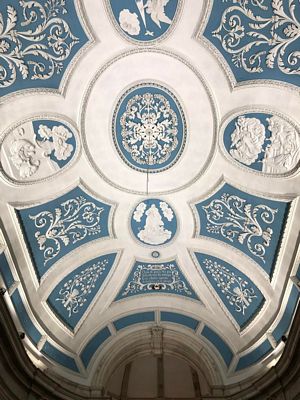
The ceiling of the church
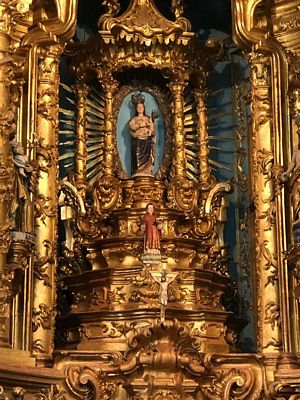
Gilded alter decoration
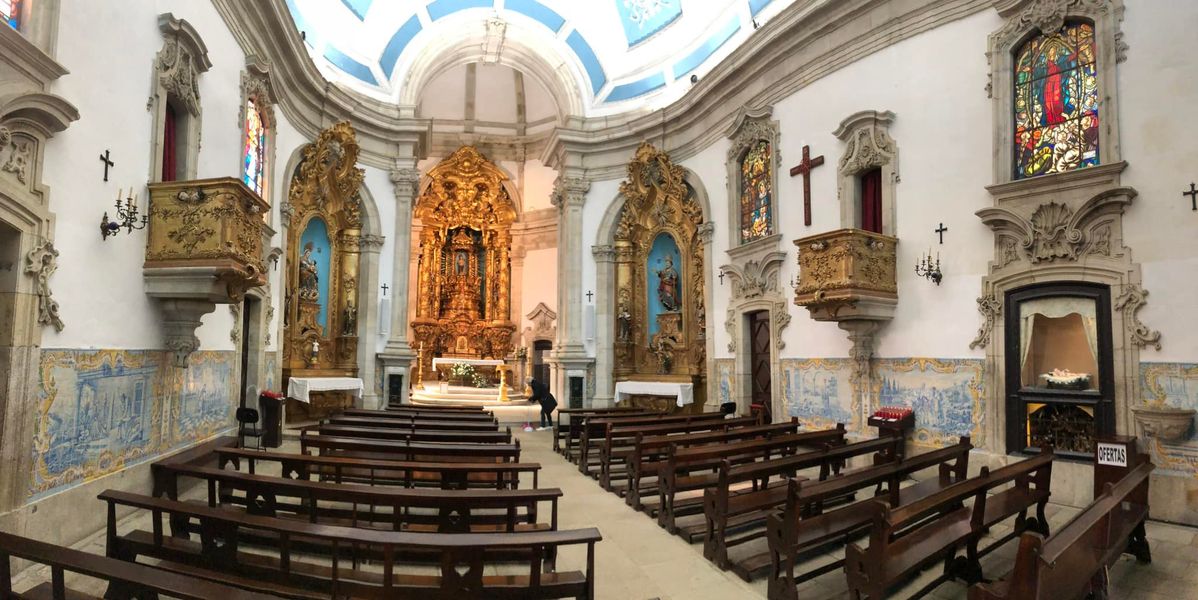
Interior of the church with volunteer cleaner
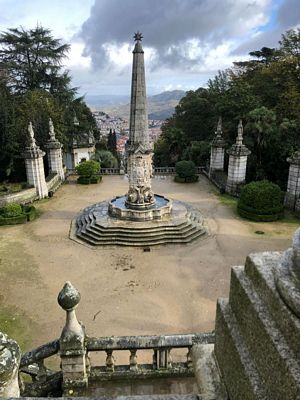
Looking down the steps towards the town
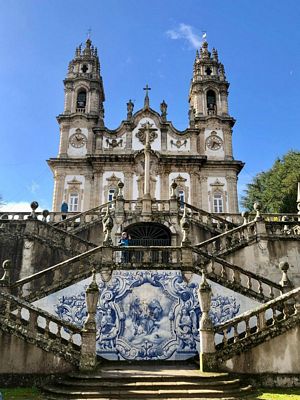
The tiled staircase
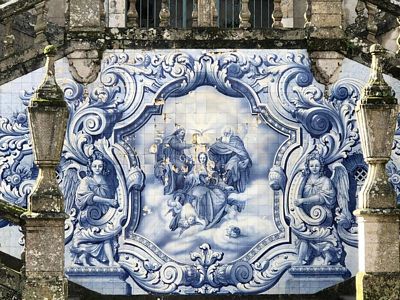
Detail of tiled image
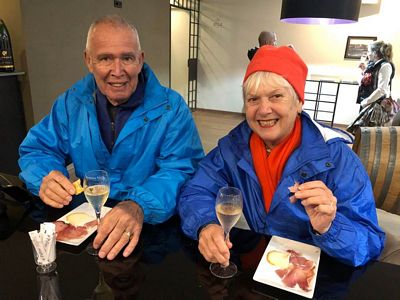
Carole and John enjoying some local produce with Douro sparkling wine

The local sparkling wine was very good
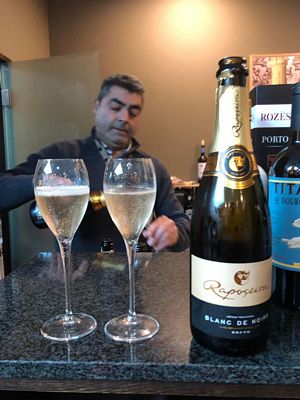
The sparkling wine from the Douro
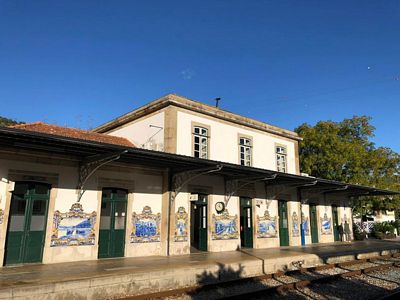
The railway station at Pinhão
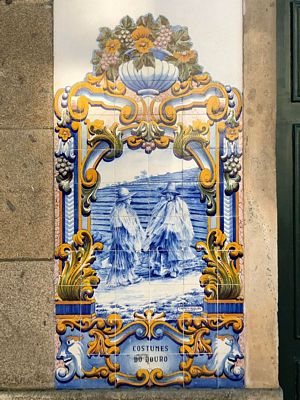
Detail of painted tiles at the station showing workers with traditional "wet weather" gear
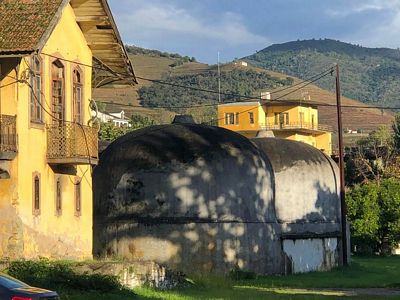
A Couple of "Ginas" for first stage port fermentation
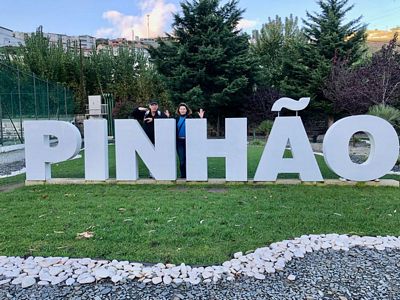
Leaving Pinhão
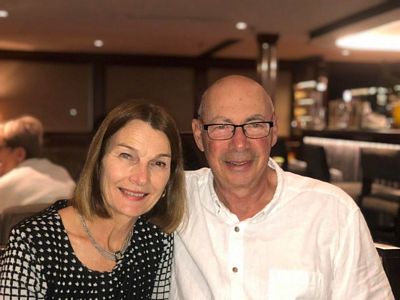
Relaxing in the lounge
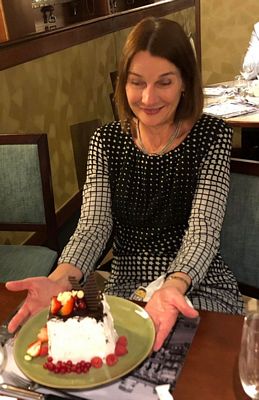
Happy Birthday Frances
That evening we had a Portuguese dinner buffet featuring some traditional Portuguese foods. This was followed by the opening of bottles of “vintage” (5 year old) port wine by heating the neck of the bottle with iron tongs, then chilling the top with iced water which snaps off the top containing the cork to avoid the old cork breaking up and tainting the wine if opened by a cork screw in the normal way.
We were then invited to try a glass at the special price of €6.50 (instead of €9.00)
I hope these photos adequately demonstrate the process.
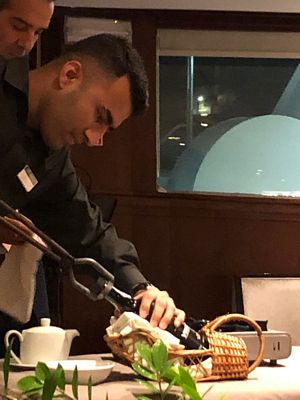
Gripping the neck of the bottle with hot iron tongs
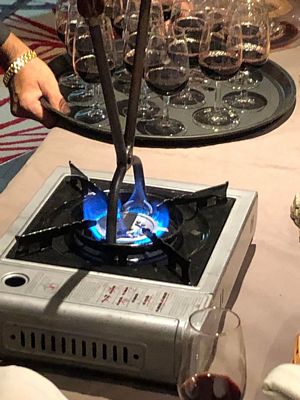
Heating the iron tongs
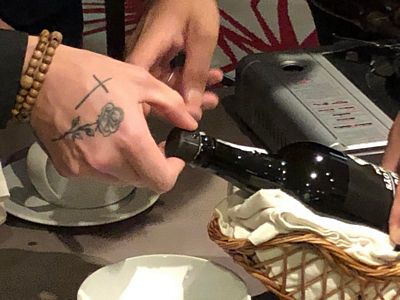
The glass has cracked after iced water was poured on the to of the bottle
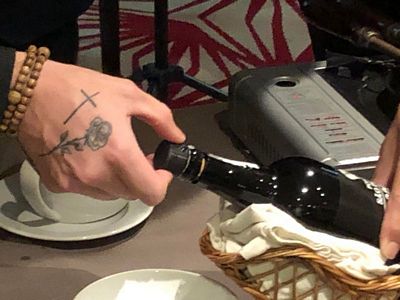
Withdrawing the top of the bottle with the cork
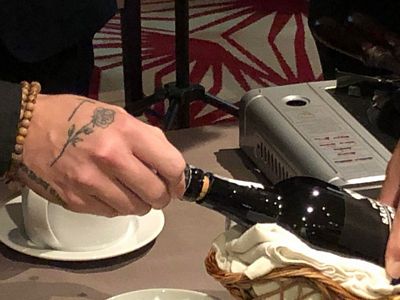
Withdrawing the top of the bottle with the cork a bit more
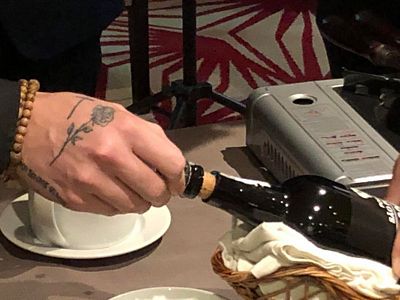
Withdrawing the top of the bottle with the cork a bit more
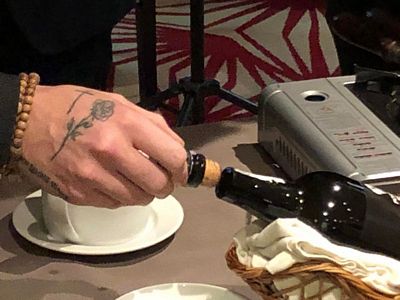
Withdrawing the top of the bottle with the cork
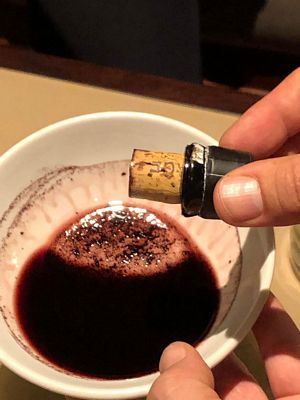
The top of the bottle and the sediment left in the bottle following fermentation. The port had to be carefully decanted so that the sediment stays at the bottom of the bottle.
Early this morning, the boat left the dock at Cais Porto Antico and because of the high water levels in the Douro River, the crew had to lower all of the upper deck infrastructure to pass under the Ponte de Mosteiro, clearing it by less, than 1m. See the photos below.
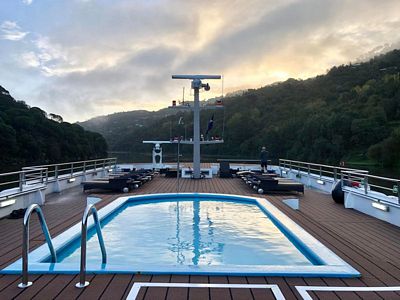
Approaching the bridge, with the upper deck structures in place.
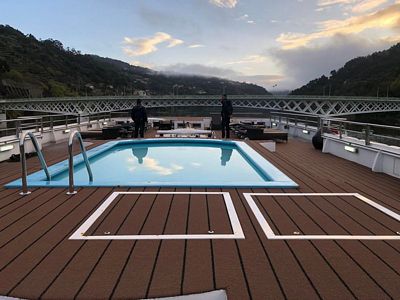
The upper deck structures Lowood to clear the bridge.
Video: The ship passing under the bridge with less than 1 m clearance.
Day 31 - Tuesday 7 November - Douro Cruise, Portugal
The Douro River is still high, and the boat is still moored at Régua. Nicko Cruises offered an excursion in the morning to visit the Régua Museum, a short bus ride away across the river. It is a cultural history museum and our tour guide, Vanessa, gave a good description of the museum and its content, ostensibly a history of the Douro River valley, from pre-history to the present day.
We also had some free time to walk around the town, and it was good opportunity to see some of the dictinctive vegetables grown in the region, especially leafy greens.
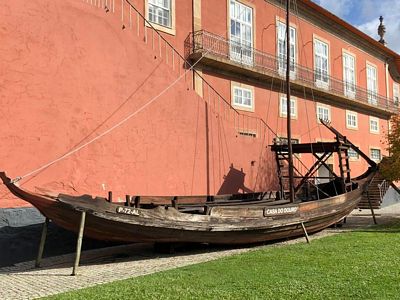
Traditional boat used to transport wine, olives, stone and other products down and up the river. They were often towed upstream by cattle and could also use sails if possible.
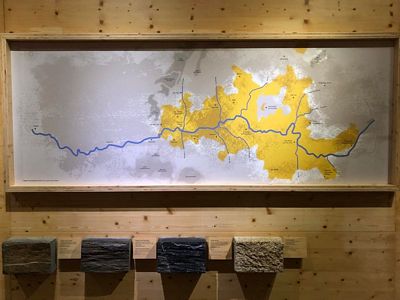
The Douro wine-growing region of the Douro River.
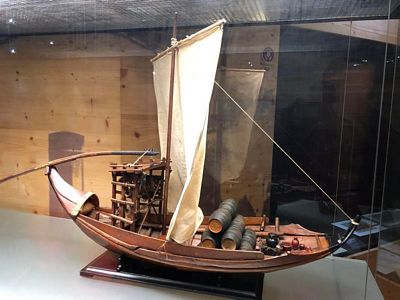
Model of a traditional boat with wine barrels.
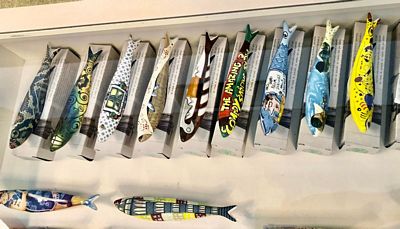
A common tourist souvenir is a hollow painted ceramic in the shape of a sardine. The quality varies considerably, but the ones in the museum were especially good.
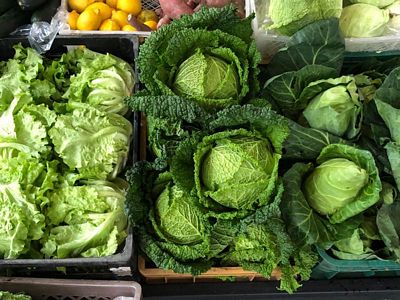
Portuguese leafy green vegetables.
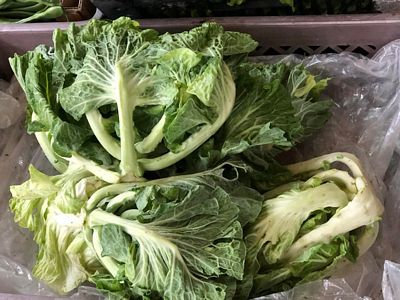
Another type of vegetable.
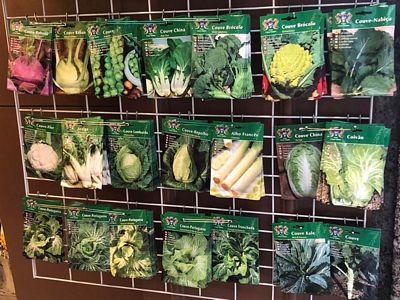
Vegetable seeds on sale, some distinctly Portuguese
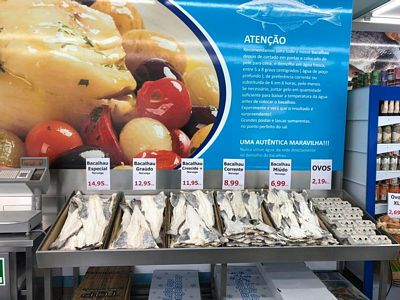
Dried bacalhou (cod) on sale - it all comes from Scandinavia even though it’s a distinctive ingredient in Portuguese cuisine.
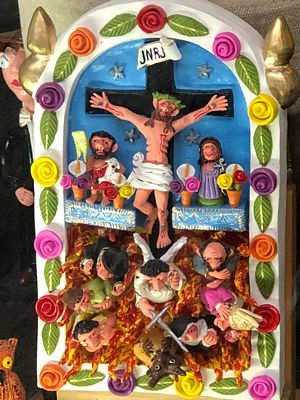
A distinctive ceramic version of the nativity in a shopfront
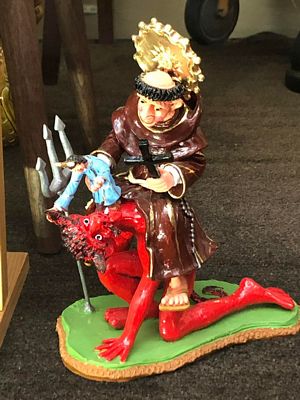
Another distinctive ceramic showing the triumph of good over evil
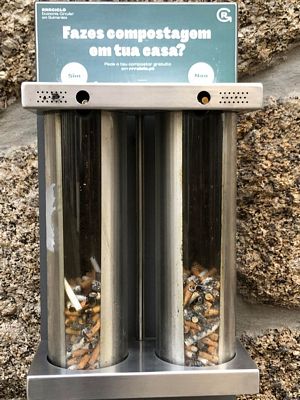
A public cigarette receptacle to discourage smoking. The caption says “Would you do the same in your house?” With options for Yes and No
After lunch, we took a 1.5 hour bus trip from Régua to Guimarães (pronounced Guimaresh) which is considered the birthplace of modern Portugal. It is here in the 12th century that the unification of the various communities on the eastern Iberian peninsula was achieved (sometimes forcefully) by Portugal's first King, Afonso Henriques following the decisive Battle of São Mamede. He then proceeded to expel the Moors from the south creating the country of Portugal with substantially the same borders it has today.
We started at the hilltop castle built by his mother the Countess Mumadona Dias and then we were guided into the city where we had some free time. Fortunately the rain held off so we enjoyed a walk through the old part of the city which we found quite impressive - Guimarães shares many of the characteristics of Porto but which had quite a different feeling which is difficult to explain.
Then, as darkness fell, we had a the long drive back to the boat at Pinhão just in time to freshen up for a “farewell reception” where the passengers were reintroduced to the crew and then a “gala dinner”. The meal was presented as a type of degustation, with 7 small dishes presented over a period of a couple of hours. Later, a group of local singers and musicians provided some entertainment, including a little “fado”. This led to some late night dancing with both passengers and especially the housekeeping crew which was great fun.
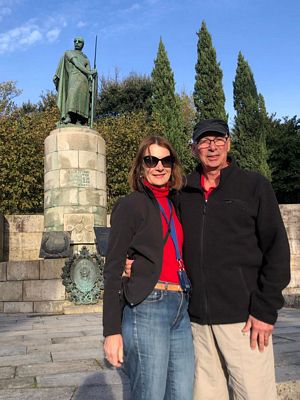
In front of a statue of Portugal's first King, Afonso Henriques
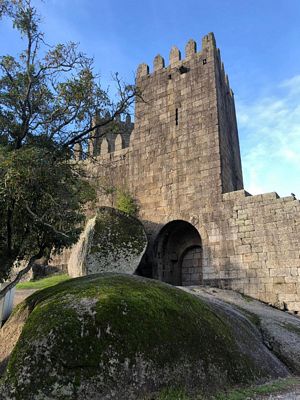
Hilltop castle built for Afonso Henriques
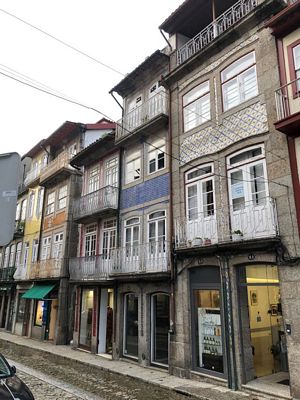
Typical houses with flat facade, iron balconies and tiled exteriors
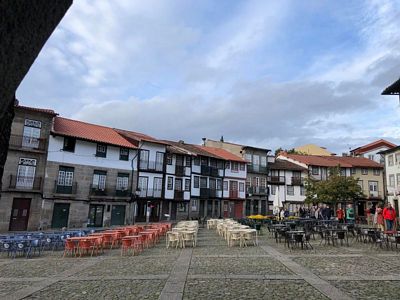
Old Guimarães town square
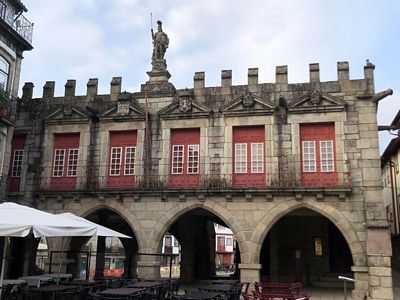
Old Guimarães town hall
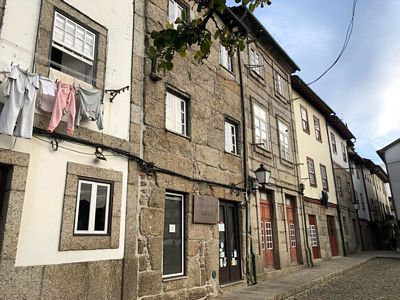
Local streets of Guimarães

Building with flat facade, iron balconies and tiled exterior
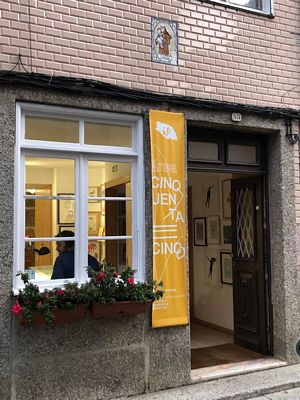
Excellent small illustrators gallery
Day 32 - Wednesday 8 November - Douro Cruise, Portugal
This is the last official day of the Douro Ricer cruise and we returned to Porto today. On the way we had a tour of the ship’s bridge and meet the captain, Carolina, the only female captain of the 30 boats working the Douro. She is only 36 years old, and was encouraged by her father, a fisherman, to study to become a captain. We learned quite a lot about the ship and the river cruise industry including the relationship between the fleet owners and the tour companies like Nicky, Viking, etc. who engage them.
We stayed on board overnight and prepared to leave tomorrow morning by train for Lisboa (Lisbon).
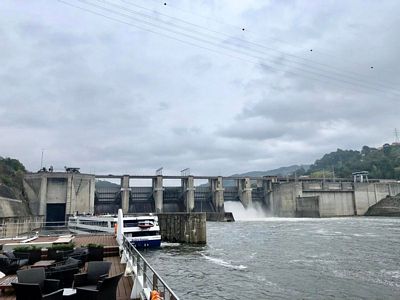
Leaving the last lock as another boat enters to go upriver
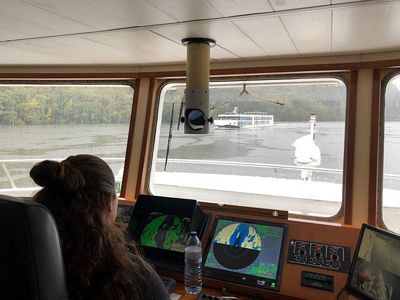
View from the bridge with Captain Carolina
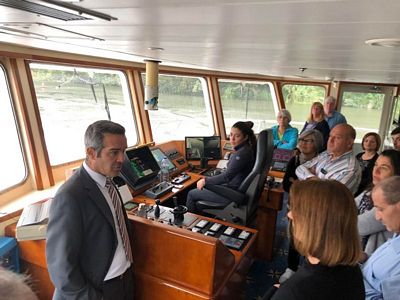
The ship’s director explains the interaction between the ship’s owners and the tour companies.












